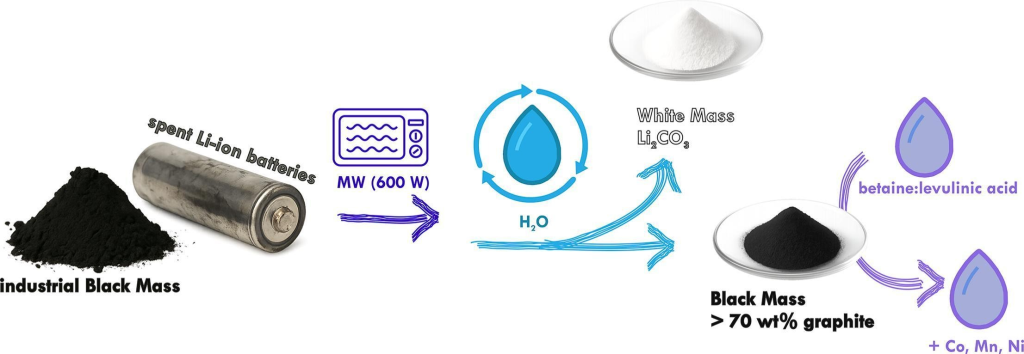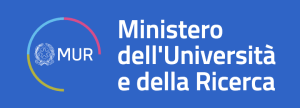In this page only the peer-reviewed publications about CARAMEL project are reported (they are also available in SCOPUS).

- 1. Recent improvements in salt-assisted and microwave-assisted recovery methods for sustainable metal extraction from NCM cathodes in spent lithium-ion batteries: a review,Separation and Purification Technology, Volume 363, Part 1, 14 August 2025, 131918 (https://doi.org/10.1016/j.seppur.2025.131918)
- Abstract: The increasing adoption of electric vehicles has generated a pressing need for sustainable management of end-of-life lithium-ion batteries (LIBs), particularly those utilizing nickel-rich layered oxide cathodes (NCM). This review critically examines recent advancements in recycling technologies, focusing on innovative methods such as salt-assisted roasting and microwave-assisted thermal treatments, as well as their combined applications. These approaches demonstrate promising potential to enhance the selective recovery of critical metals like lithium, nickel, cobalt, and manganese, while addressing environmental and economic challenges. Additionally, the review highlights sustainability assessments and identifies key gaps in the current literature, emphasizing the need for integrated strategies to minimize energy consumption and environmental impact. By providing a comprehensive analysis of these emerging recovery methods, this work aims to guide future research and industrial adoption, contributing to a circular economy for LIBs.

- 2. Sample preparation procedures for elemental analysis of critical raw materials in lithium-ion battery black mass: Challenges responding to the supplementary battery recycling regulation, Journal of Environmental Management, Volume 380, April 2025, 124973 (https://doi.org/10.1016/j.jenvman.2025.124973).
- Abstract: Accurate assessment of black mass (BM) composition is critical for implementing the European Commission’s proposed methodology for calculating and verifying recycling efficiency and material recovery from waste lithium-ion batteries (LIBs). BM, derived from spent LIBs, presents analytical challenges due to its complex matrix and high-carbon content, which can impede complete dissolution and bias recovery calculations. Incomplete BM digestion and inconsistencies in analytical methods can lead to overestimated recycling efficiencies. This study evaluates and optimizes sample preparation strategies, including digestion protocols and analytical techniques, to reliably extract and quantify critical metals such as lithium, cobalt, nickel, and manganese. To address these issues, we propose standardized digestion procedures and highlight the suitability of techniques like TXRF, which mitigate matrix effects and enhance data reliability. This research underscores the importance of defining clear standards and methodologies in the regulatory framework, ensuring that reported recovery rates accurately reflect true recycling efficiencies. Finally, this work proposes some regulatory and policy improvements, intending to better align with the EU’s sustainability goals, promoting reliable data, advancing circular economy objectives, and supporting the broader energy transition.
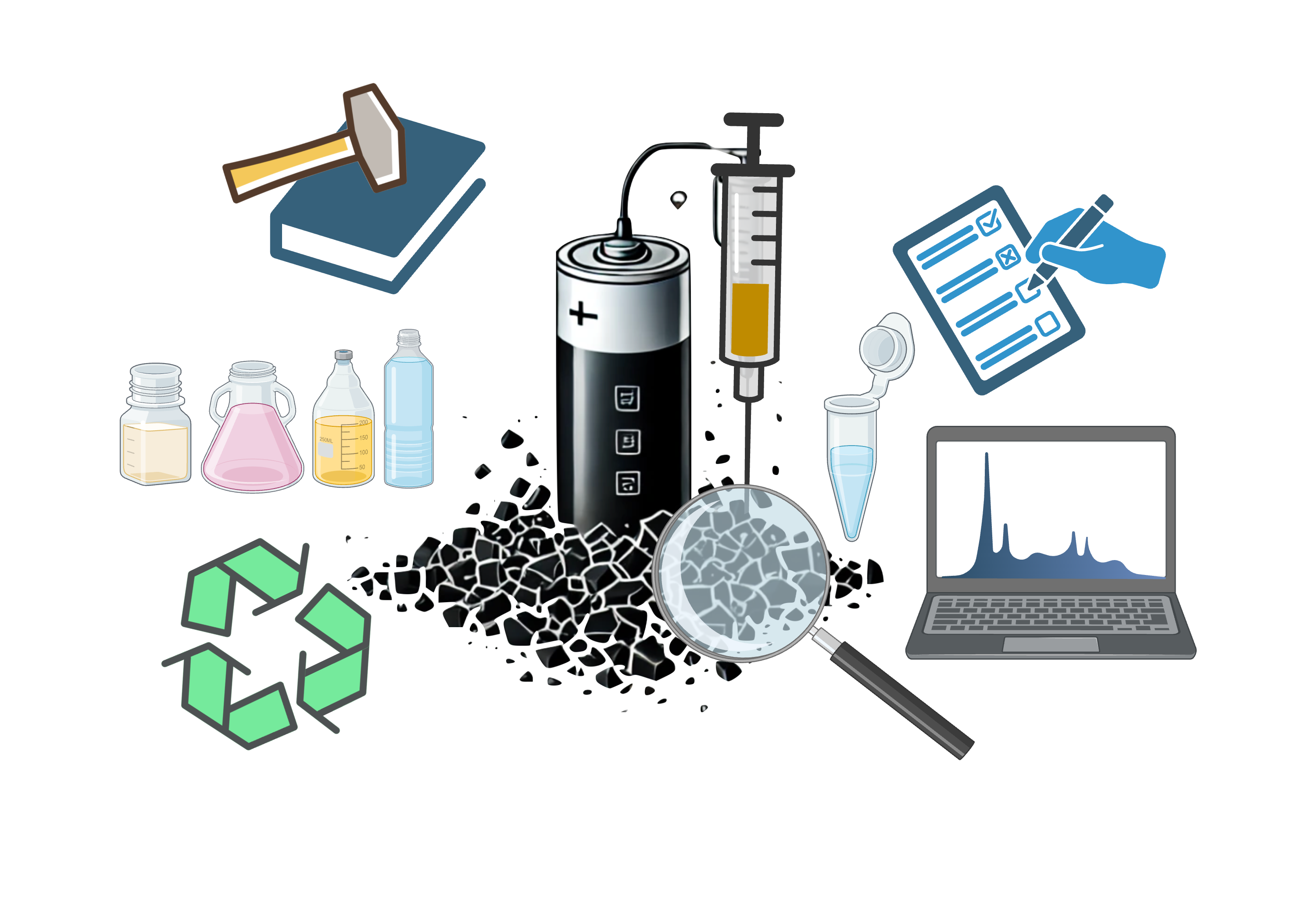
- 3. Determination of lithium concentration in black mass using laser-induced breakdown spectroscopy hand-held instrumentation, Scientific Reports, 15 Article number: 17483 (2025), (https://doi.org/10.1038/s41598-025-90379-4https://doi.org/10.1038/s41598-025-90379-4).
- Abstract: Lithium has become one of the most strategic materials in the industry, given its wide use for the realization of efficient energy storage devices and for improving the chemical and physical characteristics of advanced ceramic and glass materials. Its widespread use in the last decades has also posed problems for its recovery and recycling, mostly from exhaust Li-ion batteries, which are mechanically treated to obtain the black mass. The black mass is a carbon-based material derived from the cathodic and anodic components of the batteries, containing several metals, as for example cobalt and nickel, along with lithium in varying quantities. Therefore, it is important to develop fast and accurate techniques for determining the black mass composition. This information is also essential for optimizing the extraction processes of lithium or other metals from the black mass. In this paper, we employ automated data processing using an Artificial Neural Network (ANN) to analyze spectra acquired from black mass equivalent materials with a commercial hand-held Laser-Induced Breakdown Spectroscopy (LIBS) instrument, enabling the determination of lithium content from a minimal set of spectral features. Additionally, we compare the results obtained for real black mass with reference values from other elemental analysis techniques. The combination of the ANN algorithm speed and robustness with the reliability of the LIBS instrument demonstrates the feasibility of accurate determination of the lithium content in black mass with a minimum treatment of the samples and on very different matrices.
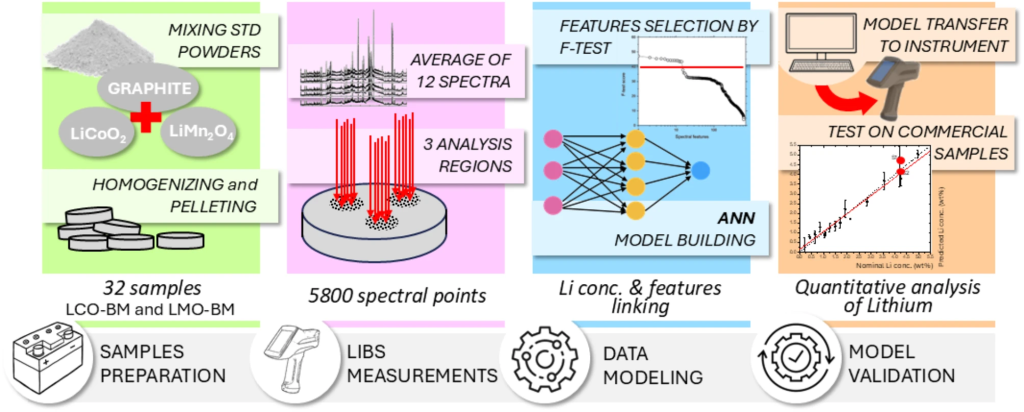
- 4. Exploring the viability of cryogenic freezing for safe pretreatment in lithium-ion battery recycling,Renewable Energy Volume 252, 15 October 2025, 123481, Renewable Energy Volume 252, 15 October 2025, 123481 (https://www.sciencedirect.com/science/article/abs/pii/S0960148125011437)
- Abstract: Recycling of massive spent lithium-ion batteries (LIBs) is urgently required with the development of electric vehicles and energy storage industries. However, due to their complex composition and uncertain state, spent LIBs pose significant fire hazards during the recycling process. In this work, liquid nitrogen (LN) and dry ice (DI) were utilized as refrigerants to investigate the inerting mechanism and thermal stability of spent LIBs. Post-mortem and thermal analyses indicated that when spent LIBs are subjected to low temperatures (below −60 °C), the solidification of the electrolyte and the separation of internal components cause an increase in internal resistance, leading to a drop in terminal voltage where it cannot deliver energy. Nail penetration tests demonstrated that cryogenic freezing effectively suppresses thermal runaway, reducing peak internal battery temperatures from 921.2 °C to below 150 °C, with a temperature rise rate suppressed to under 3 °C/s. Additionally, DI exhibited a more sustained cooling effect than LN and is proposed as a safer and more cost-effective alternative for enhancing safety in LIBs recycling.
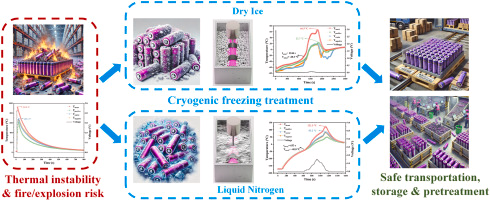
- 5. Performances and structural evolution of a new critical raw materials-free catalyst, synthesized from spent lithium-ion batteries, for solar-driven CO₂ conversion, Green Chemistry https://doi.org/10.1039/D5GC02583D
- The development of next-generation catalysts is crucial for advancing sustainable CO₂ conversion technologies and addressing pressing environmental challenges. This work integrates green chemistry principles by combining CO₂ valorization, waste recovery, and renewable energy use, demonstrating a sustainable and circular approach to catalyst discovery and application. This study investigates the functional and structural properties of a novel malate-based catalyst synthesized starting from spent lithium-ion battery waste, developed after lithium recovery. Under solar photothermo-catalytic conditions, the catalyst showed excellent CO₂-to-solar fuel conversion (CO and CH₄) at low temperatures, with a CH₄ selectivity > 80%, compared to classical catalysts based on critical raw materials. X-ray pair distribution function analysis was used for the first time to reveal a significant structural transformation: the catalyst undergoes a transition from a crystalline resting state to an amorphous, catalytically active shell during reaction, significantly enhancing the material efficiency. A preliminary sustainability analysis shows that the embodied energy and carbon footprint values associated with the synthesis of the new malate are comparable with those of the classical catalysts used for this application, based on ceria, titania, and bismuth.
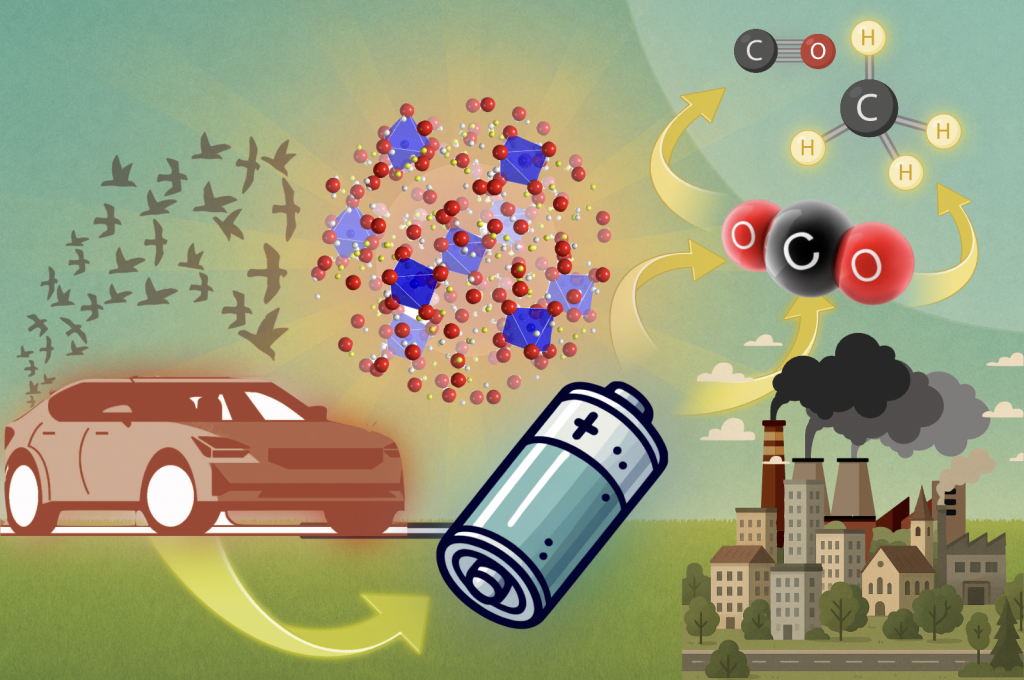
- 6. Low melting mixtures from waste as leaching agents for black mass processing, Journal of Molecular Liquids, Volume 435, 1 October 2025, 128161, https://doi.org/10.1039/D5GC02583D
- The search for suitable solvometallurgy alternatives to classic hydrometallurgy for the extraction of critical elements such as Li, Co, Ni, and Mn mixed Black Mass (BM) obtained from spent Li-ion batteries is a target of primary importance. This approach, although effective at the laboratory scale, lacks sustainability when applied to the large volumes typical of industrial productions. Herein, a circular fabrication of two leaching agents is presented. Starting from waste cooking oils, which were recycled and subjected to chemical hydrolysis, glycerol and a mixture of long-chain Free Fatty Acids (FFAs) were obtained. The glycerol was mixed with water (1:3 M ratio) to obtain a leaching medium with low viscosity, while the FFAs were combined with menthol to produce a set of low melting mixtures. The determination of their eutectic composition was achieved by DFT calculations and 1H NMR spectroscopy. Both systems were tested as leaching agents for processing a mixed BM showing promising lithium removal rates and selectivity.

- 7. Selective and sustainable recovery of lithium from black mass via microwave and green leaching techniques,Materials Science and Engineering: B, Volume 323, January 2026, https://doi.org/10.1016/j.mseb.2025.118734
- The growing demand for lithium-ion batteries (LIBs) has intensified the need for efficient and sustainable recycling processes to recover critical metals such as lithium, cobalt, Ni, and Mn from spent batteries. This study presents a novel microwave-assisted pyrometallurgical-hydrometallurgical approach for the selective and high-yield recovery of Li and from industrial black mass (BM). The process integrates microwave-induced carbothermic reduction with a two-step leaching strategy, water leaching for Li2CO3 recovery and deep eutectic solvent (DES)-based leaching for Co, Ni, and Mn extraction. Advanced characterization techniques (SEM/EDS, ICP, XRD) confirmed the selective separation of metals. In the optimized version, the proposed process allowed up to 85% Li efficiency. A sustainability assessment using the ESCAPE index demonstrated the environmental advantages of this method over conventional acid-based hydrometallurgy. This scalable and eco-friendly process offers a suitable pathway for Li recovering from spent LIBs, aligning with circular economy principles and future industrial implementation.
